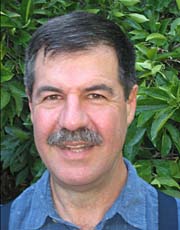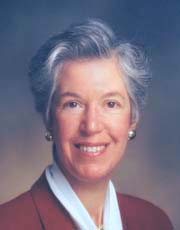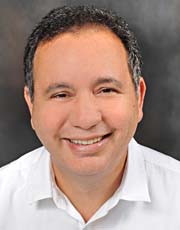Register
Click here to register online, and pay with a credit card (deadline Tuesay, October 28th at 5:00pm).
Click here to register by mail (pdf) and pay by check (deadline: received by Monday, October 27).
Fall 2014 SoCal-Nev Section Meeting
Pomona College, Claremont, California
Saturday, November 1, 2014
(Directions and Map)
Tentative Program
- 8:00-12:00 Registration
Smith Campus Center Courtyard - 8:00 -10:30 Refreshments
Smith Campus Center Courtyard
- 8:00-9:00 Graduate Students drop-off Job Application Materials for Feedback
Smith Campus Courtyard - 8:30-2:30 MAA Book Sale
Rose Hills Theater Lobby, Smith Campus Center
Organized by Richard Katz and Michael Hoffman, CSU, Los Angeles - 9:00-10:00 Invited Address by Susan Horn, Senior Scientist, Institute for Clinical Outcomes Research, Salt Lake City,
Utah
Mathematics Can Change the World (of medical practice)
Rose Hills Theatre, Smith Campus Center - 10:00-10:15 Section Business Meeting
Recognition of 25- and 50-year members
MAA Centennial 1915-2015
Rose Hills Theatre, Smith Campus Center
- 10:30-12:30 Contributed Paper Session
View the call for papers
Edmunds 101, 111, and 114, and Lincoln 01-125 and 01-135
Organized by Bruce Yoshiwara, Pierce College - 12:30-1:30 Lunch
Lunches will be distributed in Smith Campus Center Courtyard - 1:30-2:30 Invited Address by Francis Bonahon, USC, Los Angeles, California
Curvature: From Mountain Passes and Summits, to Soap Films and the Internet
Rose Hills Theatre, Smith Campus Center - 2:30-3:00 Refreshments
Smith Campus Center Courtyard - 2:45-3:00 Graduate Students pick up reviewed job application materials.
Smith Campus Center Courtyard - 3:00-4:00 Invited Address by Shahriar Shahriari, Pomona College, Claremont, California
Problems with No Right to be Open
Southern California-Nevada Teaching Award winner
Rose Hills Theatre, Smith Campus Center
Directions and Maps
For a campus map and driving directions, see the website at http://www.pomona.edu/about/visiting/. Here is a PDF of the campus map.
Parking: Parking is free in the Cowart ITS Building underground parking structure, 156 E. Seventh Street, labeled P4 on the campus map at the above link. Enter from Seventh Street.
Hotels
Visit Pomona College's accommodation page for a list of nearby hotels.
Registration Fees
| Registration | |
| Nonmember | $45 |
| MAA Member | $40 |
| Student | $15 |
Box lunch Each includes a bag of chips, a cookie, and a beverage and a choice of: a Chicken Caesar Wrap, Greek Vegetable Wrap, Turkey Deli Sandwich, or Roast Beef Deli Sandwich. . |
|
| Add | $10 |
On-site registration will be available for the meeting, but will be $5 more than the pre-registration charge.
Register
Click here to register online, and pay with a credit card (deadline Tuesday, October 28th at 5:00pm).
Click here to register by mail and pay by check (deadline Monday, October 27th).
Francis BonahonUSC |
Francis Bonahon is Professor of Mathematics at the University of Southern California. He was educated at the École Normale Supérieure in Paris, and completed his graduate education at the University of Paris XI (Orsay) in 1979, 1985 or 1987, depending on the definition of a terminal doctoral degree used. Bonahon has a long track record of research in topology and geometry, with a predilection for low dimensions and pretty pictures. He wrote Low-dimensional geometry: from euclidean surfaces to hyperbolic knots, a book published by another American mathematical association. He was a Sloan Fellow (1987) and a Presidential Young Investigator (1989), and is currently a Simons Research Fellow recovering from a term as department chair. Bonahon gave an invited address at the 1990 International Congress of Mathematicians (Kyoto), and is an inaugural Fellow of the American Mathematical Society. |
Curvature: From Mountain Passes and Summits,
to Soap Films and the Internet
The notion of curvature was originally developed to study the properties of curves and surfaces in space. It has recently found applications in very different settings, such as the large networks that arise in our increasingly connected world. In this talk we will show how insights from differential geometry can be used to analyze and explain some of the new phenomena that can be observed in these networks. We will stay away from ugly formulas, and focus instead on the intuitive significance of curvature.
Susan HornInstitute for Clinical Outcomes Research |
Susan Horn is Senior Scientist, Institute for Clinical Outcomes Research, and Vice President of Research, International Severity Information Systems, Inc., located in Salt Lake City, Utah. She is Adjunct Professor in Departments of Biomedical Informatics and Physical Medicine and Rehabilitation, in the Schools of Medicine and Nursing at University of Utah. From 1968 to 1992, she was a professor at The Johns Hopkins University in Baltimore, Maryland. Dr. Horn developed the Comprehensive Severity Index (CSI®), with inpatient, ambulatory, long-term care, hospice, rehabilitation, and pediatric modules. She has been principal investigator of more than 30 practice-based evidence comparative effectiveness projects, including preventing and healing pressure ulcers in long-term care, traumatic brain injury, post-stroke rehabilitation, and chronic cancer and non-cancer pain. She earned a BA in mathematics at Cornell University and a PhD in statistics at Stanford University, and has authored over 230 publications. |
Mathematics Can Change the World (of medical practice)
A mathematics major offers pathways to many different careers – from accounting to agriculture to business to consulting to engineering to investing to medicine to zoology to Zen master, and many others. For me, mathematics has indeed provided an exciting pathway, to learn about and contribute to many different scientific fields.
In the first part of this talk I will describe my personal mathematical journey: my early interest in mathematics, music, and medicine; which led to a Ph.D. in statistics; and to the creation of a new research study design to discover medical interventions that are associated with better clinical outcomes in real-world patients. Today the news is rich with controversy about the benefits and costs of one treatment vs. another treatment. Insurers and governments struggle to decide what to pay for and how to structure incentives for consumers and providers. To help them make good decisions, comparative effectiveness research examines relationships between medical treatments and patient outcomes.
In the second part of this talk I will describe various approaches to comparative effectiveness research, including my practice-based evidence study design, and give examples of practice-based evidence study findings (including managed care, pediatric infections, stroke, and traumatic brain injury rehabilitation), and explain how our findings changed medical practice nationally.
Shahriar ShahriariPomona College |
Shahriar Shahriari is the William Polk Russell Professor of Mathematics at Pomona College, where he has been since 1989. He is a graduate of Oberlin College and received his PhD from University of Wisconsin-Madison. Shahriari is the author of Approximately Calculus, published by the AMS in 2006 and selected as a Choice Outstanding Academic Title for 2007. He serves on the editorial board of Order, has edited three conference proceedings, and is the author of over 30 research articles, mostly in combinatorics (many with undergraduate co-authors). He has won Pomona College's Wig teaching award four times, was the winner of MAA's Carl B. Allendoerfer Award in 1998, and is the recipient of the 2014 MAA Southern California-Nevada Section Distinguished Teaching Award. Shahriari emphasizes collaboration and student discovery in all of his classes. |
Problems with No Right to be Open
You have 47 real numbers that add up to zero. You are interested in collections of 5 of these numbers whose sum is non-negative.
Without knowing the numbers, are you assured that there are at least 163,185 such collections?
Consider all 8 subsets of {1,2,3} and organize them into the following "chains":
{2} ⊆{2,3}
{3} ⊆{1,3}
The combinatorics of finite sets is replete with easily stated problems, conjectures, and surprising results. The subsets of a finite set are also an example of a finite partially ordered set (poset), and questions and results about finite sets can (sometimes) be extended to other posets. I will give a sampling of conjectures and results in the combinatorics of finite sets and discuss possible generalizations to other posets.
Contributed Paper Session
Faculty and students (undergraduate and graduate) are invited to submit short proposals for 15-minute talks in the Contributed Paper Session of the Fall 2014 Meeting.
This session accepts contributions in all areas of mathematics, including research and pedagogy, and all complete proposals will be considered.
The selection of talks will be based on interest to the expected audience, on common themes with other submissions, and on scheduling constraints. Since space and time are limited, acceptance may be prioritized based on the status of the speaker; first undergraduates (U), then graduate students (G), retirees (R), and faculty (F) in order of rank (lower rank has higher priority).
Submissions should contain a title, an abstract (not to exceed 150 words, should be suitable for inclusion in the conference program), the author(s) of the paper (with an indication of who the presenter will be), the desirable mathematical background of the audience, and any special presentation display needs(*).
Do include in each submission the institutional affiliations of all authors if they have any, as well as their current status (U, G, R, or F). Select up to two of the categories below to indicate your main theme:
Education / Pedagogy;
History and Philosophy of Mathematics;
Interdisciplinary Topics;
Probability and Statistics;
Geometry and Linear Algebra;
Analysis;
Number Theory;
Graph Theory and Combinatorics;
Algebra and Topology;
Applied Mathematics;
Other Assorted Topics.
(*) Each room will have a built-in projector for computers. If you require a document camera, a computer, or any other presentation setup, please say so in your proposal and we will work with you to obtain one.
Ideally abstracts should be submitted in LaTeX format, with an accompanying PDF file. If you do not use LaTeX, please submit a text document together with a PDF file. Please email all submissions to Bruce Yoshiwara, at yoshiwbw@piercecollege.edu.
The submission deadline is noon on Monday, October 13, 2014. Looking forward to your submissions!
